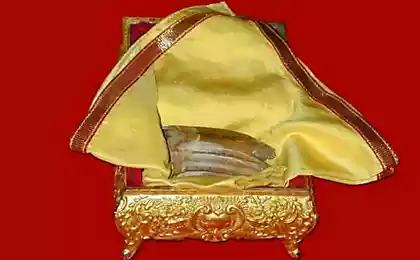521
The warnings and risks associated with teeth whitening
Sensitivity Bleaching can cause a temporary increase in sensitivity to temperature, pressure and touch. It is most likely that this will happen during the dental bleaching if you use a clarifier high concentrations. Some patients feel sudden severe pain in the middle of the front teeth.
Most at risk of sensitivity to bleaching people with gingival recession, large cracks in the teeth or as a result of errors in treatment. It was also found that red-haired people face this risk even if they do not have any other risk factors.
The sensitivity caused by the whitening lasts for a day or two, but in some cases may appear up to a month. Some dentists recommend a toothpaste for sensitive teeth that contains potassium nitrate. Gum irritation More than half of those who used the hydrogen peroxide, could feel the irritation of the gums varying degrees, caused by the concentration of the bleaching agent or contact with bleaching plates. This irritation continues for several days, gradually disappearing after cessation of lightening or reducing the concentration of peroxide. "Variegation teeth" Cosmetic restoration of teeth, crowns or porcelain veneers are not susceptible to the influence of the clarifiers and thus have its original color after bleaching surrounding teeth. This can cause the so-called "raznovidnosti teeth."

Maintain the results of bleaching in order To prolong the effect achieved in teeth whitening, dentists recommend the following: — teeth Whitening at home: is applied immediately after the whitening procedure or once a year. — Limit the use temnookrashennaya foods and beverages at least a week after whitening. — When possible, drink dark beverages through a straw. — Oral hygiene: brushing and flossing after meals and before bedtime. Cautions in Addition to the risks listed above, before the procedure, whitening should pay attention to the following warnings: — No amount of bleach will not provide "unnaturally" white teeth. The whitening results are fully visible after two weeks after the procedure. This applies to those who wants to put a crown to choose the right color. — If a cosmetic restoration, porcelain veneers and other restoration procedures are not included in Your plans, you cannot assign them less than two weeks after the clarification, not to make a mistake in selecting colors. — To avoid the effect of polychromy probably need to replace all elements of the teeth restoration after bleaching. — Recession of the gums often gives the yellowness at the root surface of the gum line. This yellow is very hard to remove. — Pregnant and breastfeeding women is not recommended procedure for lightening the teeth, since the effect of swallowed bleach on the fetus or child is not already installed. Author: Yana Gumenyuk
Source: estet-portal.com/
Most at risk of sensitivity to bleaching people with gingival recession, large cracks in the teeth or as a result of errors in treatment. It was also found that red-haired people face this risk even if they do not have any other risk factors.
The sensitivity caused by the whitening lasts for a day or two, but in some cases may appear up to a month. Some dentists recommend a toothpaste for sensitive teeth that contains potassium nitrate. Gum irritation More than half of those who used the hydrogen peroxide, could feel the irritation of the gums varying degrees, caused by the concentration of the bleaching agent or contact with bleaching plates. This irritation continues for several days, gradually disappearing after cessation of lightening or reducing the concentration of peroxide. "Variegation teeth" Cosmetic restoration of teeth, crowns or porcelain veneers are not susceptible to the influence of the clarifiers and thus have its original color after bleaching surrounding teeth. This can cause the so-called "raznovidnosti teeth."

Maintain the results of bleaching in order To prolong the effect achieved in teeth whitening, dentists recommend the following: — teeth Whitening at home: is applied immediately after the whitening procedure or once a year. — Limit the use temnookrashennaya foods and beverages at least a week after whitening. — When possible, drink dark beverages through a straw. — Oral hygiene: brushing and flossing after meals and before bedtime. Cautions in Addition to the risks listed above, before the procedure, whitening should pay attention to the following warnings: — No amount of bleach will not provide "unnaturally" white teeth. The whitening results are fully visible after two weeks after the procedure. This applies to those who wants to put a crown to choose the right color. — If a cosmetic restoration, porcelain veneers and other restoration procedures are not included in Your plans, you cannot assign them less than two weeks after the clarification, not to make a mistake in selecting colors. — To avoid the effect of polychromy probably need to replace all elements of the teeth restoration after bleaching. — Recession of the gums often gives the yellowness at the root surface of the gum line. This yellow is very hard to remove. — Pregnant and breastfeeding women is not recommended procedure for lightening the teeth, since the effect of swallowed bleach on the fetus or child is not already installed. Author: Yana Gumenyuk
Source: estet-portal.com/























